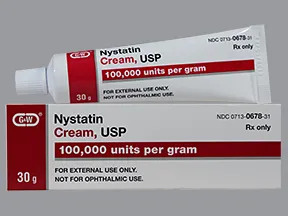
Thrush is very common in pregnant women as a result of high levels of reproductive hormones. Occasionally however, thrush can occur in post menopausal women if they have uncontrolled diabetes, hormone replacement therapy (HRT), severe chronic disease or if they use antibiotics, immuosuppressive agents or tamoxifen (a breast cancer drug). It is common in women of reproductive age group between 20–40 years and therefore reproductive hormones, particularly oestrogen, is thought to enhance the proliferation and attachment of Candida to the vaginal inner lining. Thrush is less common in girls before puberty and post menopausal women. Another 5% will suffer from recurrent thrush, which is having four or more infections a year. 75%, will develop the infection in their lifetime and half of these will have repeat infections of one or two episodes. Thrush is a common condition and it is estimated that three out four women, i.e.

These fungi tend to cause recurrent vaginal thrush and are resistant to commonly used antifungal drugs. Other types of fungi which can cause thrush include C. This occurs when the normal environment of the vagina changes as a result of several precipitating factors such as pregnancy, use of antibiotics, diabetes mellitus, HIV, chronic debilitating disease etc which in turn allows the fungus to multiply to abnormal levels and causes the signs and symptoms of vaginal thrush. albicans is part of the normal flora that lives in the mouth, throat, intestine and vagina, it may become pathogenic and cause symptoms such as vaginal discharge and pruritis (itchiness) of the vulva. It is a type of fungal infection – a yeast infection – caused most commonly by the fungus Candida albicans (in over 90% of cases). It is associated with vulvitis ( inflammation of vulva) and vaginitis (inflammation of vagina). You may report side effects to Health Canada at 1-86.Vaginal thrush (or vulvovaginal candidiasis) is a common condition that is often chronic and can interfere with women’s sexual function and sense of wellbeing. You may report side effects to FDA at 1-80 or at In Canada - Call your doctor for medical advice about side effects. If you notice other effects not listed above, contact your doctor or pharmacist.Ĭall your doctor for medical advice about side effects. This is not a complete list of possible side effects. itching/swelling (especially of the face/tongue/throat).However, get medical help right away if you notice any symptoms of a serious allergic reaction, including: Many people using this medication do not have serious side effects.Ī very serious allergic reaction to this drug is rare. Remember that this medication has been prescribed because your doctor has judged that the benefit to you is greater than the risk of side effects. If this effect lasts or gets worse, notify your doctor or pharmacist promptly. Though very unlikely, nystatin may cause vaginal irritation. Inform your doctor if your condition lasts or gets worse. Stopping the medication too early may allow the fungus to continue to grow, which may result in a relapse of the infection.
#Nystatin cream vagina full
Remember to use this medication at the same time(s) each day.Ĭontinue to use this medication for the full time prescribed, even if symptoms disappear after a few days and even if you get your menstrual period.

Use this medication regularly in order to get the most benefit from it. Ask your doctor or pharmacist if you have any questions. In most cases, you should not use medicated douches during nystatin treatment. Do not use tampons while using this medication because they can decrease its effectiveness. You may use a sanitary napkin to prevent clothing stains. To prevent medication from leaking out of the vagina, lie down as soon as possible after use.
#Nystatin cream vagina how to
If the applicator is reusable, follow the product instructions on how to clean it. Use this medication usually once a day at bedtime, or twice a day in the morning and evening, as directed by your doctor. Insert the applicator high into the vagina, then push the plunger to release the medication. With clean hands, fill the applicator with this cream to the level indicated.

If you have any questions regarding the information, consult your doctor or pharmacist. Read the Patient Information Leaflet provided by your pharmacist before you start using this medication.


 0 kommentar(er)
0 kommentar(er)
